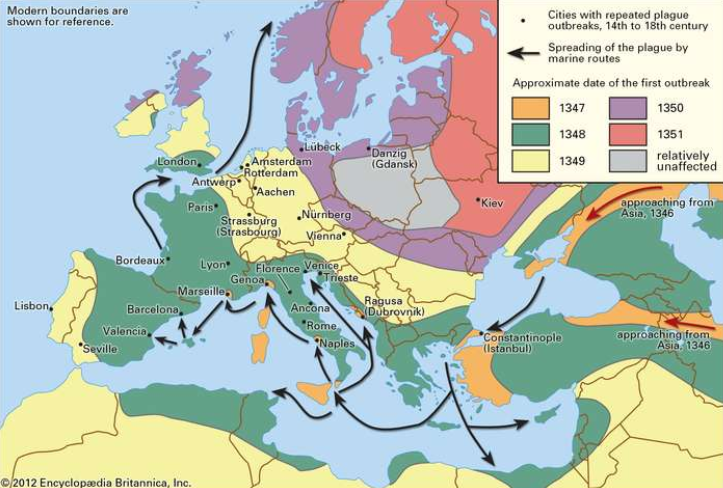What happened?
- In the early 1300s, famines and food shortages struck Europe (see “The Great Famine” for more information). Grain had to be imported from the Middle East and many of the ships bringing the grain also brought rats carrying the bubonic plague.
- As a result of plague-carrying rats being introduced from the Middle East, an outbreak of the plague erupted across Europe, North Africa and Central Asia in the mid 1300s (map below). It killed about 75 million people, including 30-60% of the population in Europe. In Europe, the plague was particularly devastating because the famines and food shortages had resulted in weakened immune systems, making people more susceptible to illness.
How is this related to climate?
- The Little Ice Age, a period of widespread cooling and a drop in average global temperatures, caused poor harvests and crop shortages that resulted in famines and the need to import grain.

Map of the spread of the Black Death in Europe, northern Africa and the Middle East (from Encyclopaedia Britannica, 2020).
References and additional resources
- Prothero, D. R. and Dott, R. H. Evolution of the Earth (8th ed). New York, McGraw-Hill Education, 2010.
- The Editors of Encyclopaedia Britannica. “Black Death.” Encyclopaedia Britannica. 2020. www.britannica.com/event/Black-Death/Cause-and-outbreak.
